“Part of the Blackjacks, south of Rock Hill, an area avoided and misunderstood by many….It drains so poorly that swampy places are frequent. The Black Jack oaks, which dominate, rarely grow taller than 30 feet and much of the plant life resembles,,. Midwestern prairie more than the usual S.C. vegetation. Charles Wilkes – 1848 (Louise Pettus)
The RH Herald reported on Dec. 15, 1887 – “The gin house of Dr. R.A. Crawford, just over the line in Chester County, was burned on Monday. He lost the gin and fixtures and 5,000 lbs of seed corn.”
400 West Chappell Road
City Directories and History: The historic community of Smith’s Turnout, established on Nov. 15, 1852, at the Chester-York County line was once a busy agricultural and business center for the rural community. The community sprang up due to the coming of the Augusta and Charlotte railroad which further connected Rock Hill and Chester by rail for the first time. Initially, Rock Hill was simply another whistle stop on the tracks just as was Smith’s Turnout. The community prospered and there were several stores, a school, homes, two cotton gins, a grist mill, cotton warehouses, and two churches. By the early 20th century a handful of large farmers controlled a
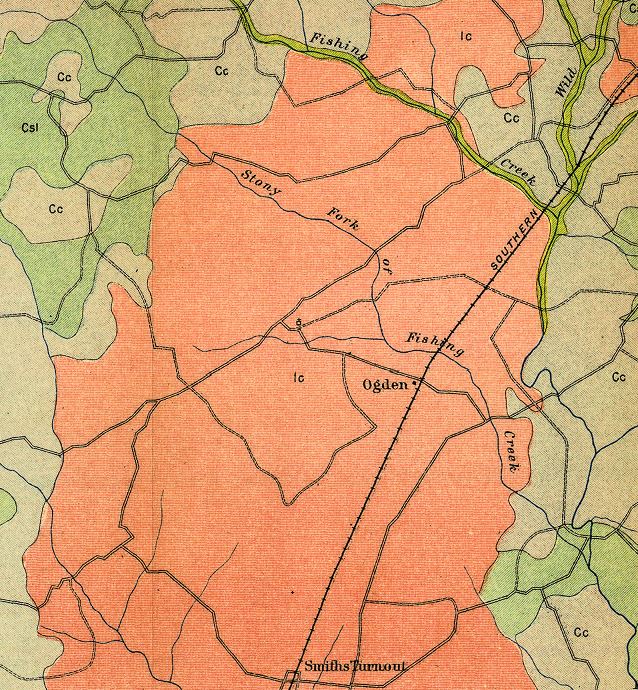
1905 Map showing the rich “Black Jack” area stretching south of Rock Hill along the railroad toward Brattonsville and Chester. It remains one of the most productive areas of cotton culture in the region.
majority of the farmland upon which African American tenant farmers worked their livestock to bring in a productive cotton crop. With the demise of cotton in the 1920’s primarily due to the boll weevil, the community declined rapidly. It was during this period that cotton brokers-factors in Rock Hill and Chester foreclosed on significant amounts of rural farmland.
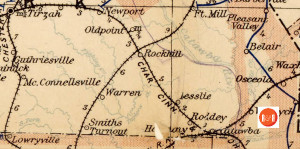
In the post Civil War era, Rock Hill began to economically and politically dominate the upper Piedmont regions of S.C. One of the reasons can clearly be seen viewing the town as a major railroad hub. Postal Map from 1896 – Courtesy of the Un. of N.C. Note the location in 1896, of Smith’s Turnout, it could boast of a P.O.
In 2012, there is little to remind one of the days when farmers took their crops to this location for ginning, market and visiting doctors from Rock Hill or Chester stepped off the train to help the sick. Frank Strait, Jr., M.D. from Rock Hill would often make visits to the area because it was from this section of the region that his family had originally settled. Curwood Chappell has often stated, “ it was Dr. Frank Strait who he met at the train to drive around the farms of his father to look after their farm hands.” This could have been in part, due to the strong connection of the Strait family to the rural Blackjack area, in which they had owned property for decades – it was home territory. One of the old Strait family holdings was adjacent that of the Chappell’s Homeplace.
The Yorkville Enquirer reported on Nov. 13, 1879 – “John Nelson, aged about 76 years was killed accidently about one mile from Rock Hill as he was returning to his home near Rock Hill. He fell from his wagon the wheels of which passed over his neck, breaking it instantly.” Reported by John N. Steele. Consequently, the former husband of his deceased wife, a Mr. Workman was killed by his team running away with him within a few feet of the spot where Mr. Nelson met his death…
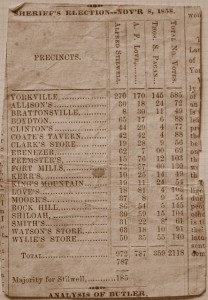
Election of Alfred Stilwell as York County sheriff in 1858. He lived in what is today, Newport, S.C. where he built coffins and carved tombstones. Note the misc. locations listed as voter sites in 1858 York County, S.C., including Smith’s.
Smith’s was also a place of education and a post office was located here. Though the school has long disappeared, the Chappell children, and many others from the area, attended a one room school house which was located on the east side of Chappell Road on what is today the Miller farm. Most of the dwellings were frame one story houses or storage facilities for cotton built from the late 19th century to the 1920’s. These buildings were nestled around the railroad crossing that offered transportation for both commerce and passengers.
Besides the Chappell family who’s children attended the school, Mr. and Mrs. Louis Wooten who lived here, was also a very prominent members of the community who owned extensive land as did the Millers, Neelys, and Reid families.
The 1860 census also list Mr. John B. Reid of Smith’s Turnout as a professional cabinet maker. Click on the More Information / MAPS > link found below the picture column for a larger map of the Smith’s Turnout area via Walker’s 1910 Postal Map of the town.
RAILROAD REFUELING STOPS: Killian’s Mill, Campbell’s Mill, Ridgeway (Fairfield Co), Simpson’s (Fairfield Co), Robertson’s (Fairfield Co), Winnsboro (Fairfield Co), Albion (?), White Oak, Youngsville, Blackstock, Cornwell, Chesterville, Lewis T. O., Smith’s T. O., Ebenezer / Rock Hill (Along the Landsford Road, by Wm. B. White, Jr. Vol., I – 2008)
Informative link: One Hundred Years, Reid Family History
The Rock Hill Herald reported on Oct. 19, 1882 – “Two bales of cotton belonging to Dr. R.A. Crawford burned at his gin house near Smith’s Turnout.”
On Dec. 20, 1883 the Herald reported – “The storehouse of Mr. J.G.R. Neely at Smith’s Turnout was entirely consumed by fire. The stock of goods is said to be worth about $3,000. and only a small amount was saved. The building was owned by Col. John Bratton.”
The Abbeville Press and Banner reported on Sept. 8, 1886 on the Charleston Earthquake which had occurred on Sept. 1st. “At Smith’s Turnout and other points in the county damage was very sever.”
The Rock Hill Herald reported on Jan. 24, 1889 – “We are informed that J. E. Lowry and Robert Witherspoon are erecting a spoke and handle factory at Smith’s Turnout. Also, a drugstore was established there last week by John A. Graham of Chester.”
The Rock Hill Herald also reported on March 7, 1889 – “Ms. Ammie Pride will be principal of a school near Smith’s Turnout.”
The Herald reported on March 9, 1901 – The barn of Mr. Richard Estes near Smith’s Turnout was destroyed by fire. He lost his corn, fodder and two mules.”
The Herald reported on May 11, 1901 – “The gin house belonging to Mr. J.M. McFadden at Smith’s has been damaged by lightning.”
The Rock Hill Record reported on March 25, 1904 – “Mrs. M.C. Matthews of Smith’s Turnout entered the Rock Hill private hospital, where she had a successful operation.”
The Rock Hill Record reported on Oct. 28, 1907 – “Mr. James F. Reid had a very serious loose at his plantation near Smith’s Turnout. His gin house, engine, two gins, press, four bales of cotton and other goods were lost in a fire.”
The Rock Hill Record reported on July 16, 1908 – “Ms. Idelle Duncan left yesterday to teach the Wilson School near Smith’s. She is boarding with Mrs. James Fincher.”
*** Smith’s Post Office: Historian Harvey Teal’s S.C. Post Office History, 1989 states: Smith’s Post Office operated by Postmaster, Mr. Bernard Lavell was started in Nov. of 1852 and operated throughout the Confederacy.
LEILA A. RUSSELL, RURAL SCHOOL SUPERVISOR by Louise Pettus Leila A. Russell, an 1889 Winthrop College graduate, was destined to become one of the college’s most
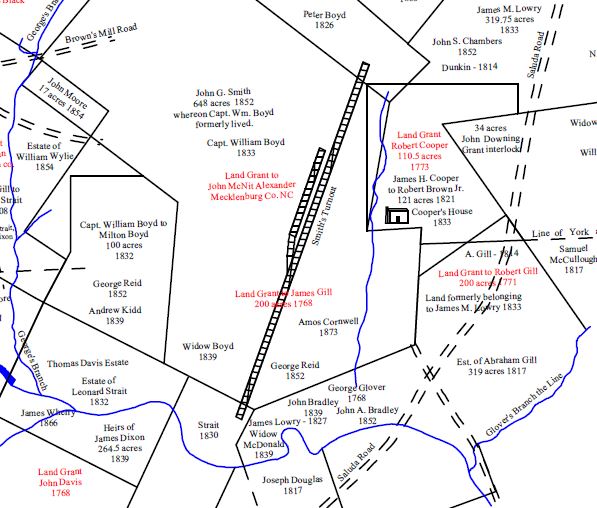
Section of the Upper Fishing Creek Heritage Plat Map by Mayhugh
distinguished graduates. Her potential was evident as an undergraduate when she organized the campus YWCA and became its first president. Leila spent several years teaching in Anderson County and then was hired as York County’s first supervisor of rural schools. Soon she was also teaching at Winthrop. She combined the two jobs neatly. Leila Russell was resourceful, creative and very persuasive. Problems abounded but she thrived on the challenge. No student teacher had an automobile (students weren’t even allowed to have cars on campus until 1953). How would they get to the rural schools? Miss Russell arranged for the girls to be placed in country schools on, or near, train depots. Among others, York County schools that fitted the bill were at Blairsville, Catawba Junction, Lesslie, Friendship, Oak Ridge, Hickory Grove, Ebenezer, Ogden, Glendale, Oakley, Smith’s Turnout, Tirzah and Smyrna. Riverside elementary school in Lancaster county was also used. How would the student teachers be housed? Miss Russell found parents who were willing to give the Winthrop students room and board. Many of the regular teachers had never been to college. Miss Russell diplomatically dealt with that problem and saw to it that the regular teacher’s skills were upgraded.
Most of the schools were in terrible condition. How could the money be raised to make needed improvements? Miss Russell had a plan. She organized the parents into clubs and persuaded diem to hold benefits of any kind that would raise money. By 1912 she had persuaded 8 school districts to levy school taxes for improvement of existing facilities and in other cases persuaded communities to build larger and better schools.
She started a newspaper column which was printed weekly in the Yorkville Enquirer. After a paragraph or two of suggestions for improving the schools she added letters from students (having asked the students in each school she visited to send her letters that told what their school was doing). A typical Leila Russell item in the Yorkville Enquirer. “Are you boys and girls making use of the libraries in your schools? And if you have no library in your school can you not manage in some way to raise ten dollars to secure one? Having done this, ask your trustees and Mr. Carroll for ten dollars from the school fund, and Mr. Carroll will see that the state gives you ten, so that you will have thirty dollars to put into good books.”
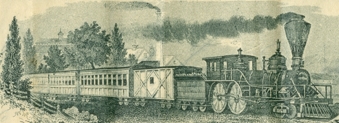
Image of an early train, the type of steam engine used along the Charlotte and S.C. Railroad. Courtesy of the White Family Collection – 2008
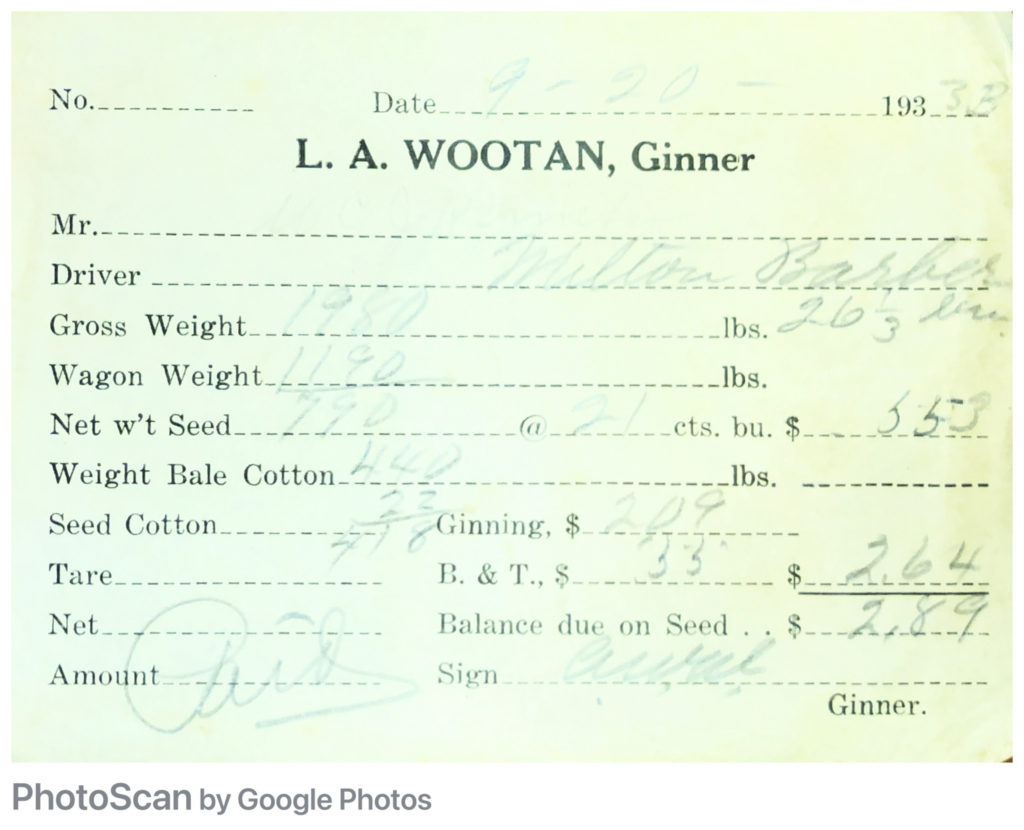
L.A. Wooten – Ginner, 1933 courtesy of the Hicklin Papers WU Archives, 2023
She promised all the boys and girls who read at least six books to have their name read on County School Day and to have the name published in the Enquirer. She formed the boys into Com. Clubs and the girls into Tomato Clubs and saw that the best ears of com and finest jars of tomatoes were displayed at the county fair. Walter Kerr, an 8th grade student, wrote that before Miss Russell came and talked to the Oak Ridge students that his school was unpainted except for a place that was painted black for a blackboard. There was only one classroom and the little stove could not heat it. Water had to be brought a long distance from a house in the community. Writing in November 1912, Walter said that now that his school was new and built according to one of the Clemson plans. The school was painted white; the windows were screened. A large Old Dominion stove heated the room and they now had a bell, a large maps and a piano…… (Information courtesy of and from: YCGHS – The Quarterly Magazine)
R&R NOTE: As Mrs. Jefferson Davis, Varina traveled south through the Carolinas by train, she would have passed directly through the village of Smith’s Turnout on her way to Chester, S.C. where she disembarked and began a muddy trek across upcountry S.C. to meet her husband in Abbeville, S.C.
Open the MORE INFORMATION / MAPS link (found under the primary picture), to view an enlargeable, 1896 Postal Map of York County, S.C.
Stay Connected
Explore history, houses, and stories across S.C. Your membership provides you with updates on regional topics, information on historic research, preservation, and monthly feature articles. But remember R&R wants to hear from you and assist in preserving your own family genealogy and memorabilia.
Visit the Southern Queries – Forum to receive assistance in answering questions, discuss genealogy, and enjoy exploring preservation topics with other members. Also listed are several history and genealogical researchers for hire.
User comments welcome — post at the bottom of this page.
Please enjoy this structure and all those listed in Roots and Recall. But remember each is private property. So view them from a distance or from a public area such as the sidewalk or public road.
Do you have information to share and preserve? Family, school, church, or other older photos and stories are welcome. Send them digitally through the “Share Your Story” link, so they too might be posted on Roots and Recall.
User comments always welcome - please post at the bottom of this page.
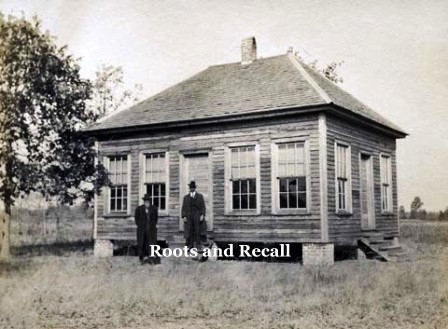
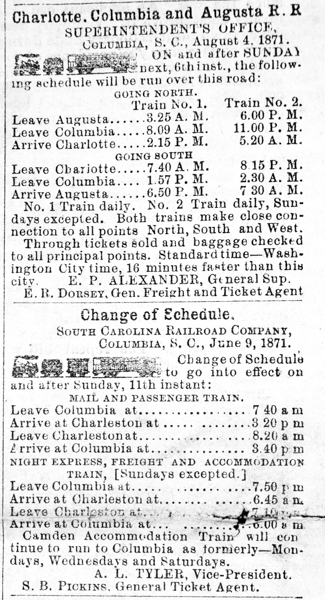
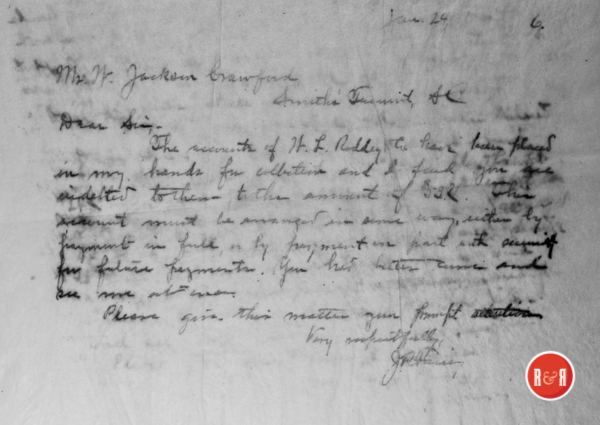
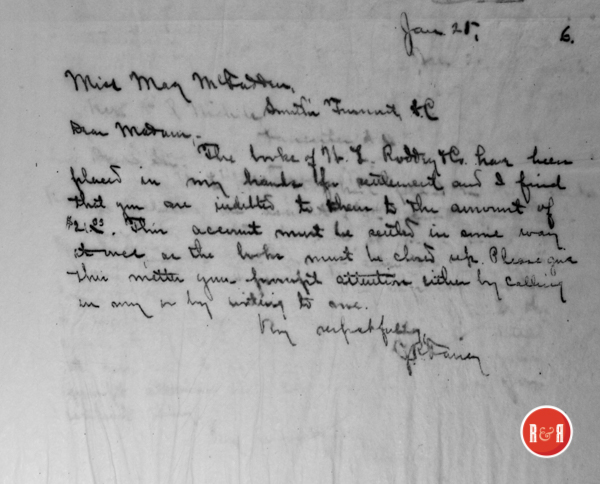
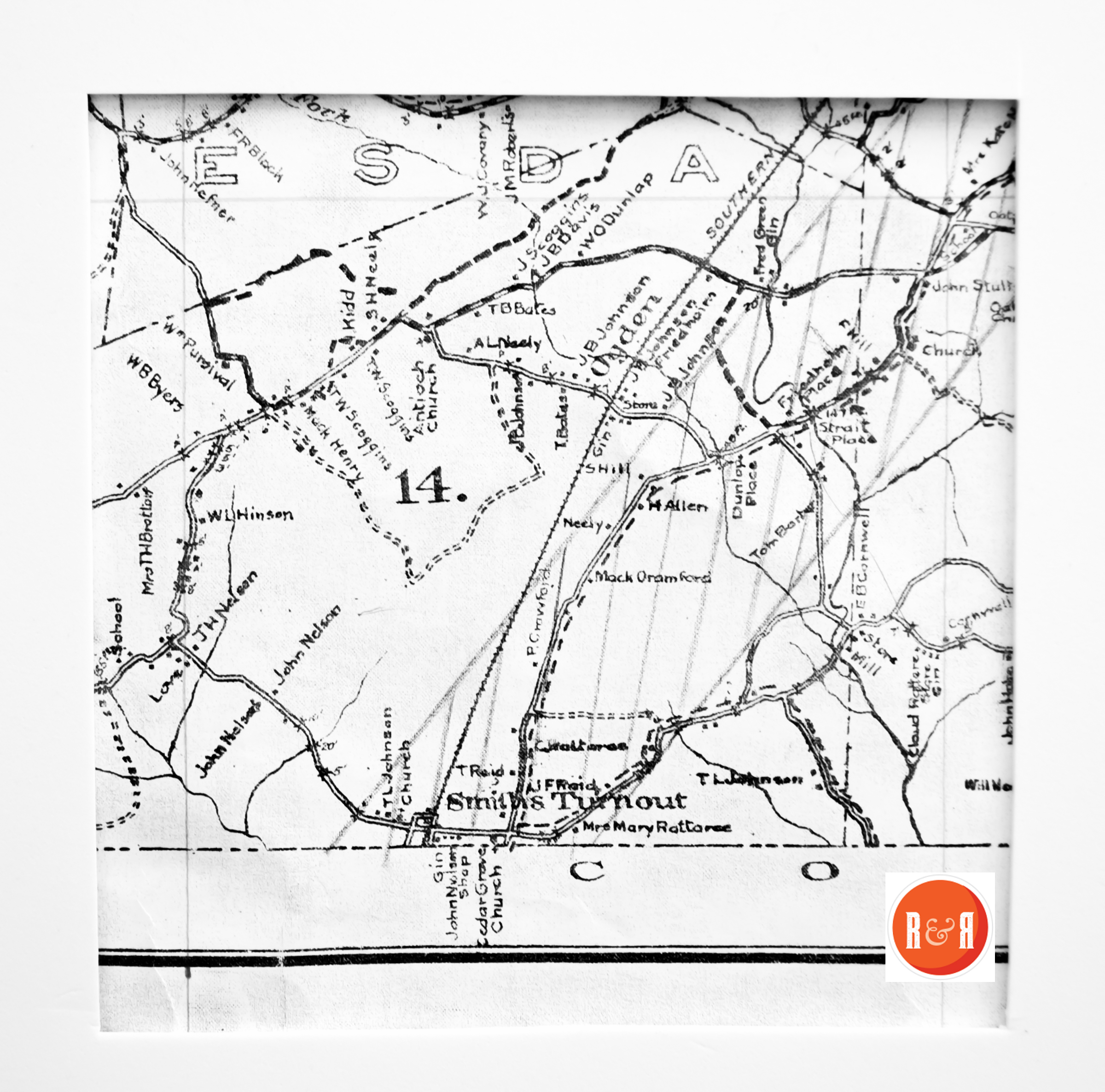
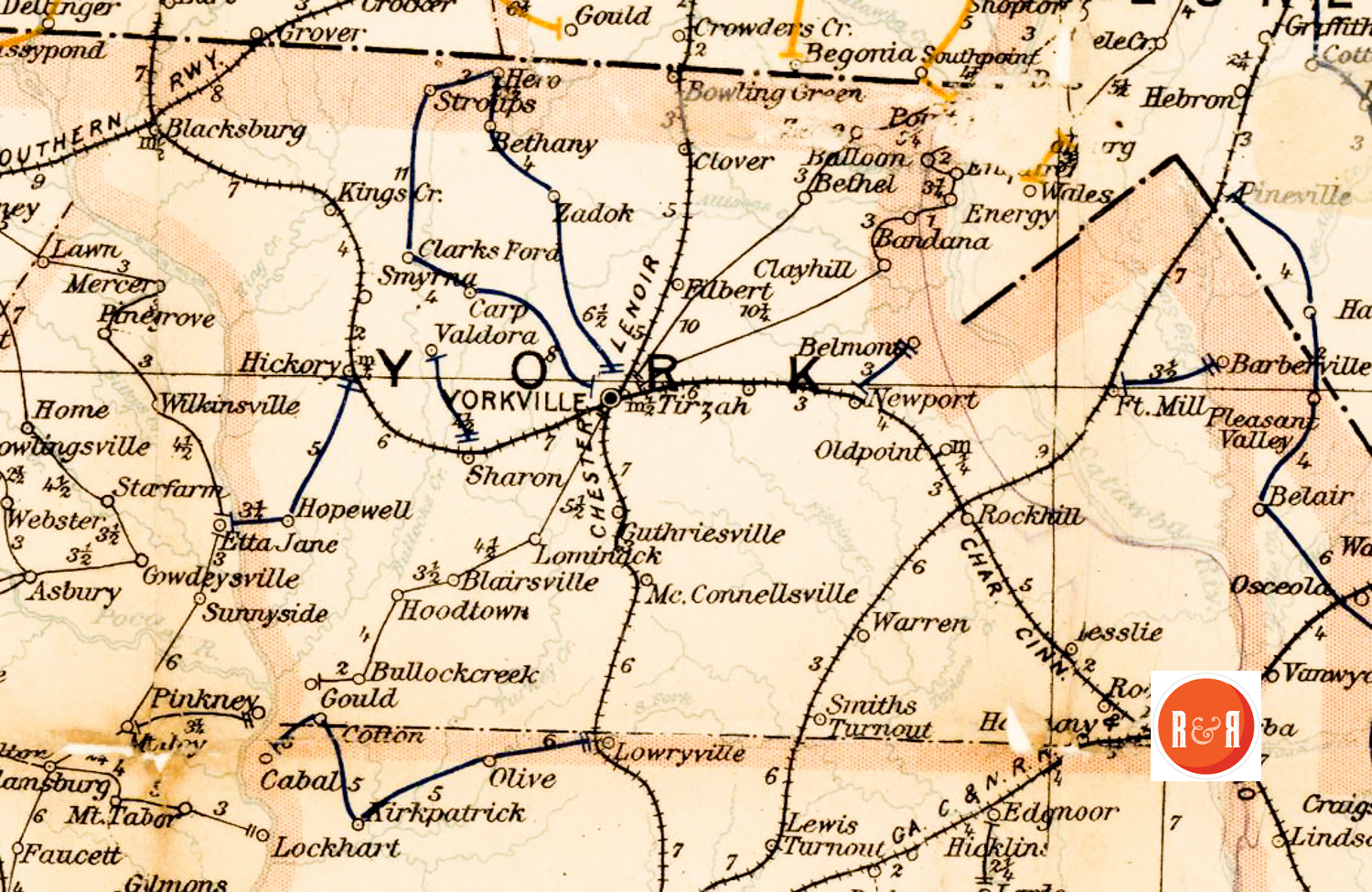
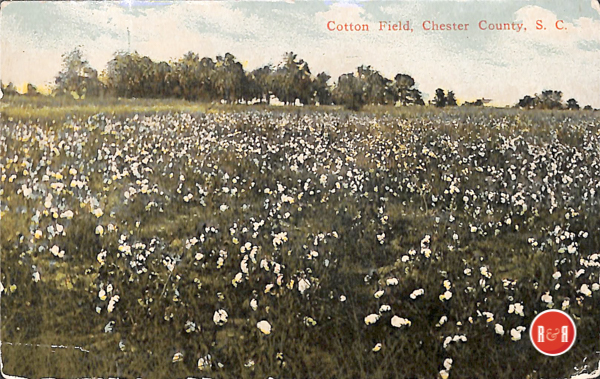
![The old Louis Wooten home is one of the only remaining homes at Smith’s Turnout in 2014. [Image courtesy of the S.C. Dept. of Archives and History – 1992]
The farmers, at least some of them, are in the hurry to gin the seed cotton. The gins at Smith’s are owned by the Messrs. Wooten. One is operated with a gasoline engine and the other uses steam power. Mr. L. A. Wooten owns the ginneries…..(The following is taken from A. M. Grist’s weekly column, “Just A-Rolling Along the Way,” published in the Yorkville Enquirer, Dec. 6,1931. John K. Scoggins acted as Grist’s guide.)](https://www.rootsandrecall.com/york-county-sc/files/2012/11/th_35daec7018489a4d3b823df8bdea5fee_1399379733SmithRoadEastChappellRd1of15-1.jpg)
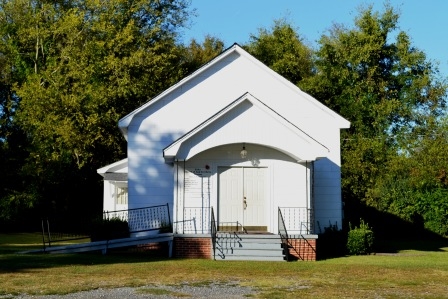
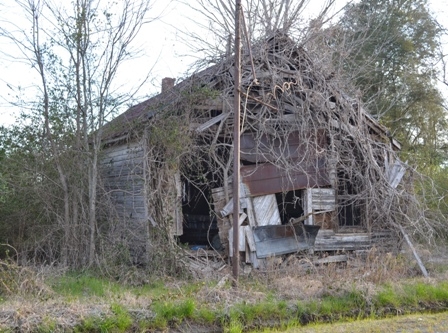
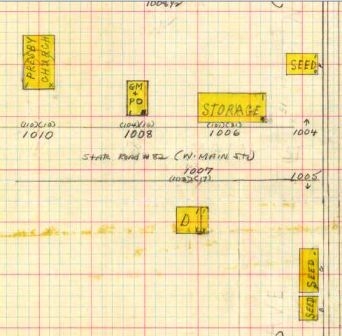
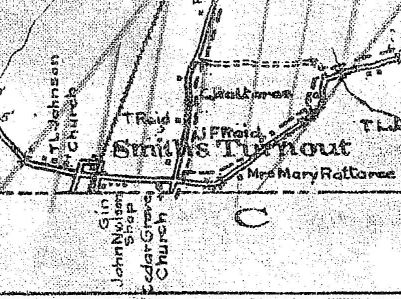
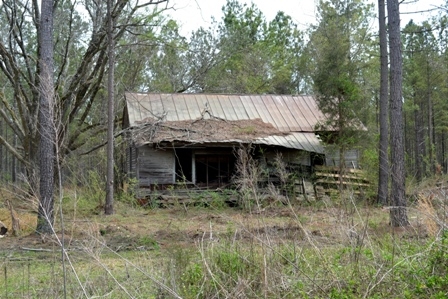
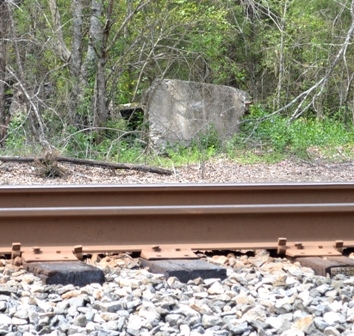
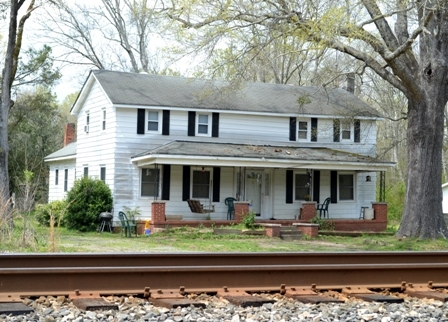
![Misc. image of Smith’s Turnout courtesy of the S.C. Dept. of Archives and History – 1992 [One of the Chappell homes in the area – demolished.] Once stood on the opposite side of the Wooten house....](https://www.rootsandrecall.com/york-county-sc/files/2012/11/th_35daec7018489a4d3b823df8bdea5fee_1399379757SmithRoadEastChappellRd1of16-1.jpg)
![Misc. image of Smith’s Turnout courtesy of the S.C. Dept. of Archives and History – 1992 [This is the same tenant house pictured above.]](https://www.rootsandrecall.com/york-county-sc/files/2012/11/th_35daec7018489a4d3b823df8bdea5fee_1399379412SmithRoadEastChappellRd1of14-1.jpg)
![Misc. image of Smith’s Turnout courtesy of the S.C. Dept. of Archives and History – 1992 [This home sat behind the store and post office building and burned in circa 1998.]](https://www.rootsandrecall.com/york-county-sc/files/2012/11/th_35daec7018489a4d3b823df8bdea5fee_1399379489SmithRoadEastChappellRd1of12-1.jpg)
![Misc. image of Smith’s Turnout courtesy of the S.C. Dept. of Archives and History – 1992 [This house once stood just west of the church.] This was listed as the T.L. Johnston, home on Walker’s 1910 map of Smith’s Turnout.](https://www.rootsandrecall.com/york-county-sc/files/2012/11/th_35daec7018489a4d3b823df8bdea5fee_1399379517SmithRoadEastChappellRd1of1-1.jpg)
![Misc. image of Smith’s Turnout Country Store, courtesy of the S.C. Dept. of Archives and History – 1992 [The remains of the old store and post office at Smith’s Turnout.]](https://www.rootsandrecall.com/york-county-sc/files/2012/11/th_35daec7018489a4d3b823df8bdea5fee_1399379583SmithRoadEastChappellRd1of13-1.jpg)
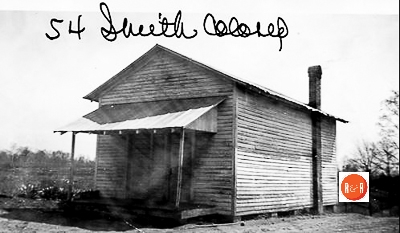
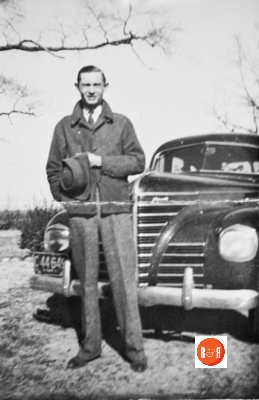
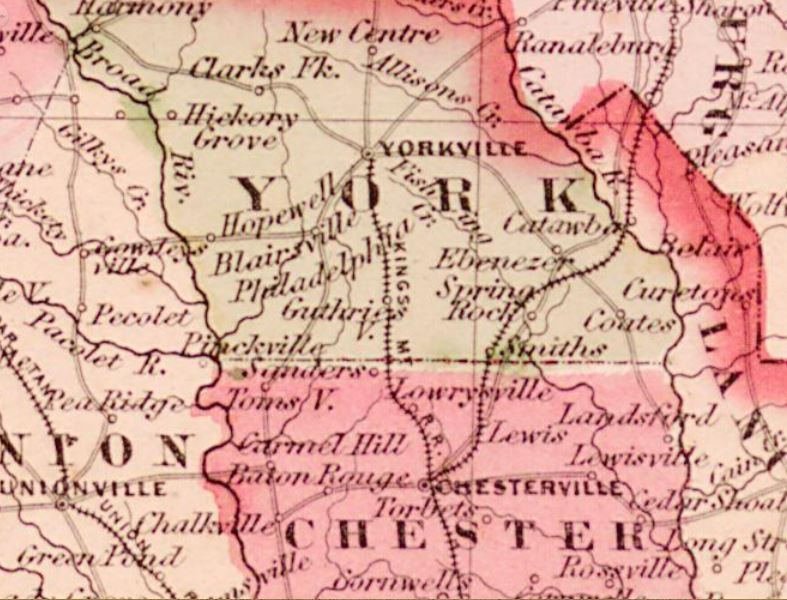





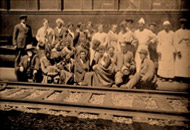
As a 59 year old African American, I have fond memories of hearing my older family members speak about growing up in this area. My father’s parents last name is Feaster. They grew up on the Darby Farm in Chester and they had other family members who lived on or near the Brattonsville Plantation. My mother’s family last name was Cook. Her grandfather’s last name was George “Pop” Cook. Her mother’s maiden name was Hattie B. Degraffenreid or “Reid”.They all lived on or near the Chappell Farm in the New Zion community. I will definitely share this information with older family members who might recall this location.